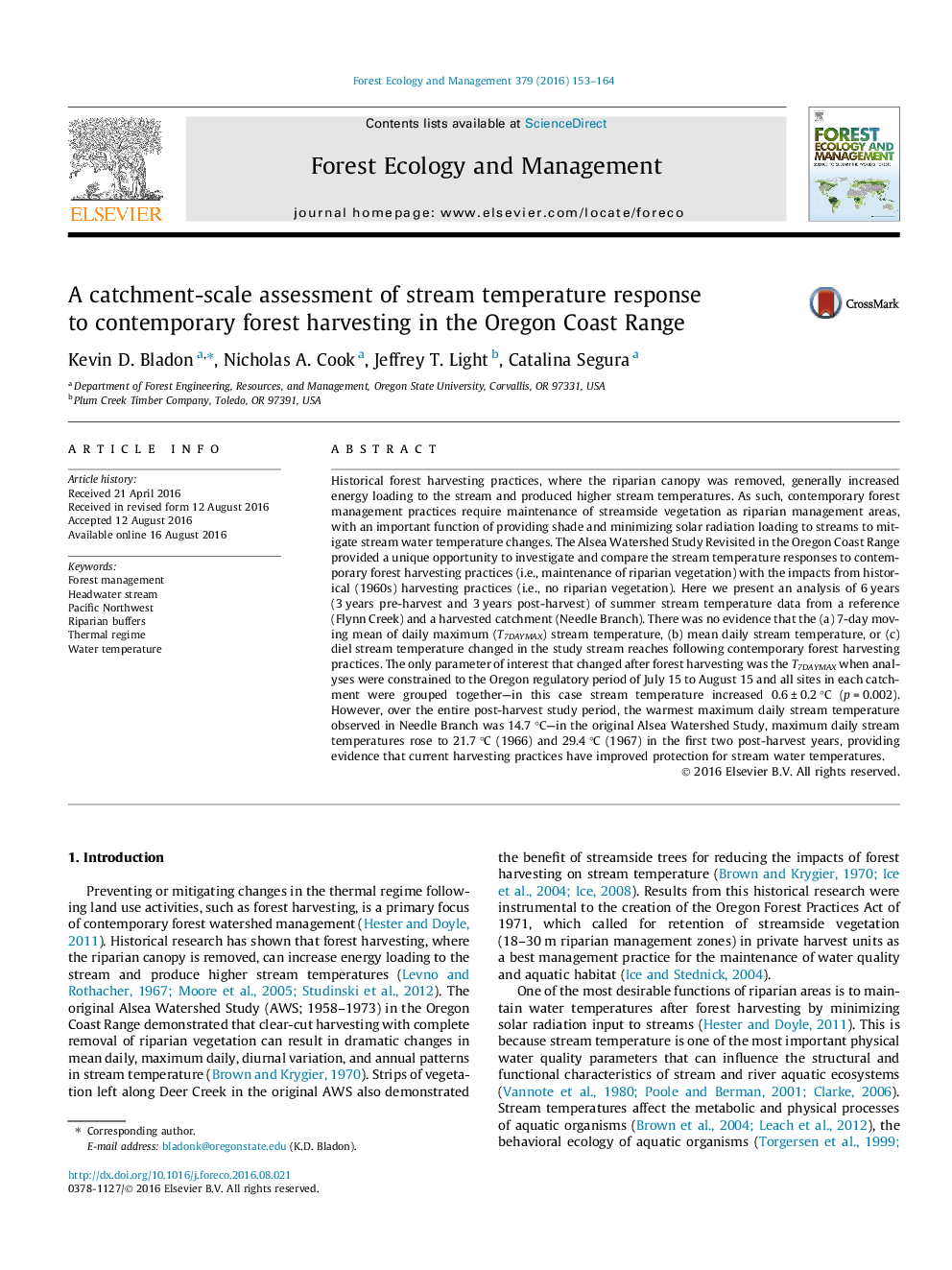| کد مقاله | کد نشریه | سال انتشار | مقاله انگلیسی | نسخه تمام متن |
|---|---|---|---|---|
| 6459634 | 1421379 | 2016 | 12 صفحه PDF | دانلود رایگان |
- Contemporary forest management effective at protecting stream temperature.
- 7-day maximum stream temperature increased after contemporary forest harvesting.
- Mean daily stream temperature not changed after forest harvesting.
- Diel stream temperature not changed after forest harvesting.
- Local catchment and stream features must be considered for broad interpretation.
Historical forest harvesting practices, where the riparian canopy was removed, generally increased energy loading to the stream and produced higher stream temperatures. As such, contemporary forest management practices require maintenance of streamside vegetation as riparian management areas, with an important function of providing shade and minimizing solar radiation loading to streams to mitigate stream water temperature changes. The Alsea Watershed Study Revisited in the Oregon Coast Range provided a unique opportunity to investigate and compare the stream temperature responses to contemporary forest harvesting practices (i.e., maintenance of riparian vegetation) with the impacts from historical (1960s) harvesting practices (i.e., no riparian vegetation). Here we present an analysis of 6 years (3 years pre-harvest and 3 years post-harvest) of summer stream temperature data from a reference (Flynn Creek) and a harvested catchment (Needle Branch). There was no evidence that the (a) 7-day moving mean of daily maximum (T7DAYMAX) stream temperature, (b) mean daily stream temperature, or (c) diel stream temperature changed in the study stream reaches following contemporary forest harvesting practices. The only parameter of interest that changed after forest harvesting was the T7DAYMAX when analyses were constrained to the Oregon regulatory period of July 15 to August 15 and all sites in each catchment were grouped together-in this case stream temperature increased 0.6 ± 0.2 °C (p = 0.002). However, over the entire post-harvest study period, the warmest maximum daily stream temperature observed in Needle Branch was 14.7 °C-in the original Alsea Watershed Study, maximum daily stream temperatures rose to 21.7 °C (1966) and 29.4 °C (1967) in the first two post-harvest years, providing evidence that current harvesting practices have improved protection for stream water temperatures.
Journal: Forest Ecology and Management - Volume 379, 1 November 2016, Pages 153-164
